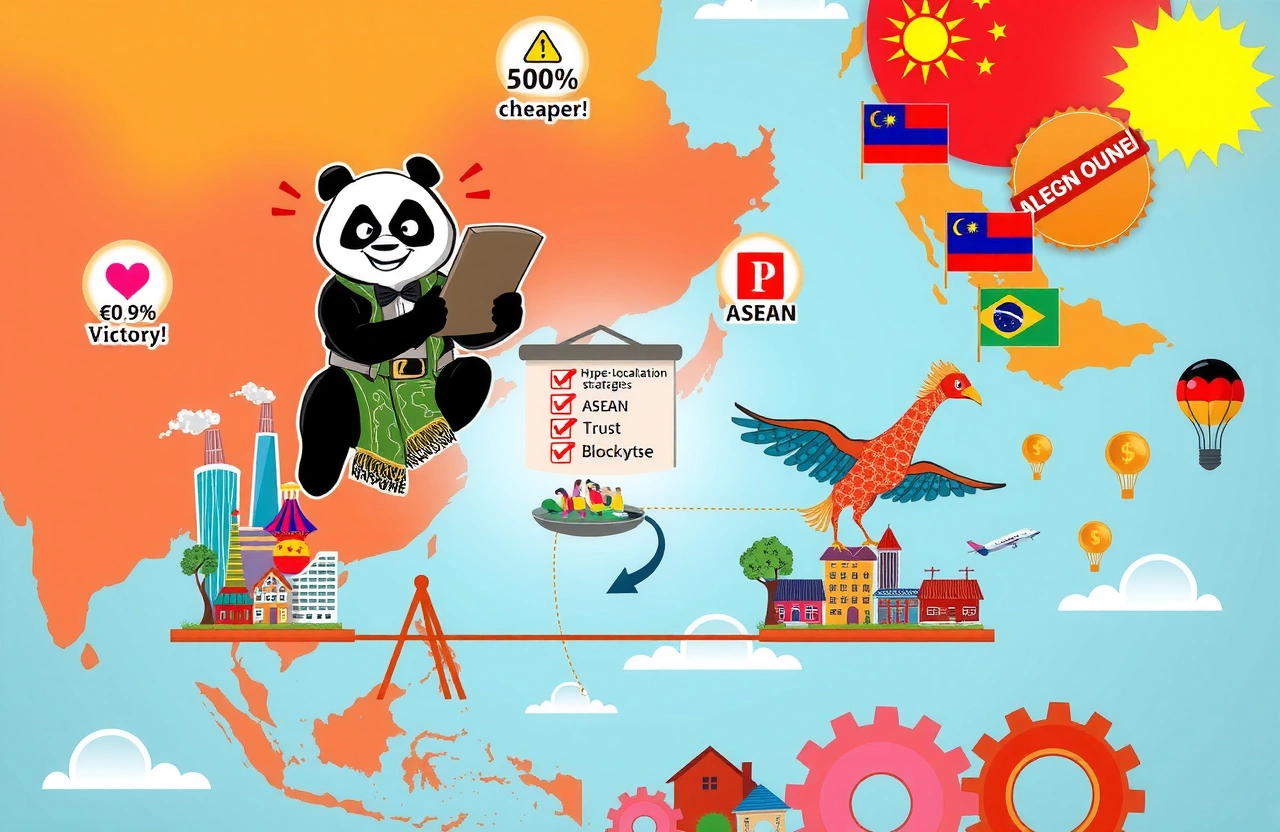The New Reality of Global Competition
When Malaysian tycoon Dato’ Sri Ye Shaoquan spoke at the 2025 Enterprise Globalization Forum in Shenzhen, his warning resonated across the conference hall: ‘In Malaysia, businesses engaging in cross-border e-commerce fear nothing more than competition from China.’ This stark admission highlights a fundamental shift in global commerce. Fifteen years ago, early international ventures enjoyed high-profit margins amid limited competition. Today, digital transparency has leveled the playing field, making the fierce competitive strategies of Chinese enterprises a dominant force worldwide.
The forum, focused on addressing challenges in global business expansion, revealed crucial insights about navigating this new era. Ye emphasized that traditional business approaches are rapidly becoming obsolete as Chinese competitors employ aggressive expansion tactics that reshape markets overnight. Understanding this evolving landscape isn’t simply advisable – it’s essential for survival in industries facing globalization’s disruptive wave.
Why Chinese Competitors Spark Fear
The apprehension many international businesses feel toward Chinese companies stems from distinct competitive behaviors honed in one of the world’s most demanding markets. Unlike gradual expansion models, Chinese enterprises often deploy rapid ‘market capture’ techniques focused on overwhelming competitors through scale and cost efficiency.
The ‘Roll Until Victory’ Strategy
‘They operate on a simple but ruthless principle,’ Ye explained. ‘Eliminate competitors through intense price competition and efficiency warfare until only they remain.’ This subsides on several structural advantages: massive domestic production capacity, integrated digital ecosystems, and logistical networks that enable unprecedented economies of scale.
Self-Destructing Expansion Patterns
Ironically, many Chinese ventures succumb to their own aggressive tactics abroad. ‘We’ve observed countless cases where companies choose one of two paths for survival: accept local integration and sustainability or push so hard for dominance that they collapse before achieving it,’ Ye noted. This demonstrates a critical vulnerability in pure volume-driven approaches.
The Local Adaptation Imperative
Combating the fear of Chinese competition requires fundamental strategic shifts. Market intelligence from organizations like Malaysian Investment Development Authority reveals that businesses succeeding against Chinese counterparts invest deeply in local market comprehension and community integration.
Case Study: Automotive Renaissance in Malaysia
Ye highlighted a pivotal example: ‘One Chinese automotive brand completely transformed its Malaysian performance after switching production to Southeast Asia and utilizing over 500 local suppliers.’ Within two years, they shifted from dwindling sales to backordered inventory with 7-8 month waitlists. Their secret? Vehicles redesigned for tropical conditions through local engineering input and marketing campaigns resonating with regional aspirations.
Their community-first strategy included:
– Localized R&D centers adapting technology for humidity resilience
– Joint ventures distributing manufacturing across ASEAN nations
– Transport solutions redesigned for narrow urban streets
– Recruitment of bilingual sales staff who understand cultural nuances
The Supply Chain Crossroads
The Chinese automaker’s success brought an unexpected dilemma, reflecting the tension behind China’s global expansion. As Ye cautioned: ‘Now they face a critical choice – maintain those 500 local suppliers completely shift to Chinese supply chains for short-term gains.’ This decision carries profound socioeconomic consequences beyond business metrics.
Economic Domino Effects
‘If they abandon local partners, it wouldn’t just hurt their brand reputation,’ Ye emphasized. ‘It would devastate entire communities dependent on manufacturing jobs.’ Research from the World Bank confirms that local supplier networks in developing economies can stimulate multiplier effects up to 2.5x initial investments. Severing these ties risks permanent market alienation and political backlash.
Alternatives to Partial Localization
Progressive enterprises balance efficiency with sustainability via:
– Gradual component localization programs
– Technology transfer initiatives building local expertise
– Tiered supplier systems maintaining critical quality control
– Co-development hubs enhancing regional capacities
Profit Sharing as Strategic Foundation
True integration requires moving beyond superficial branding into structural empathy. ‘Profit distribution can’t be an empty slogan,’ insisted Ye. ‘It must be operationalized through every partnership and pricing decision.’ This establishes the trust necessary for long-term resilience against competitors focused purely on extraction.
Organizations implementing authentic value-sharing models typically follow these principles:
– Transparent audits tracing local value chain contributions
– Dedicated community reinvestment funds
– Joint management committees with local stakeholder representation
– Long-term contracts providing small business stability
Building Competitive Immunity
Overcoming the fear of Chinese competition transforms vulnerability into sustainable advantage through cultural fluency, ethical operations, and innovative localization. As Ye stressed: ‘Businesses thriving amid global competition make communities feel respected rather than conquered.’ This requires fundamental shifts in how success is measured.
Organizations must leverage three critical competitive advantages:
1. Hyper-localization: Tailoring products/services beyond surface translation into cultural design concepts
2. Responsive agility: Establishing regional R&D centers with delegated innovation authority
3. Trust infrastructure: Implementing blockchain systems to validate ethical supply chain practices (critical for export access)
The path forward requires embedding local prosperity into your expansion DNA. Audit supplier relationships to ensure fair distribution structures and begin community benefit mapping exercises. Partner with local universities to co-develop specialized talent pipelines. Transform the fear surrounding Chinese competition into a catalyst for becoming an indispensable community partner – because sustainable globalization no longer negotiates with enterprises ignoring this reality.



